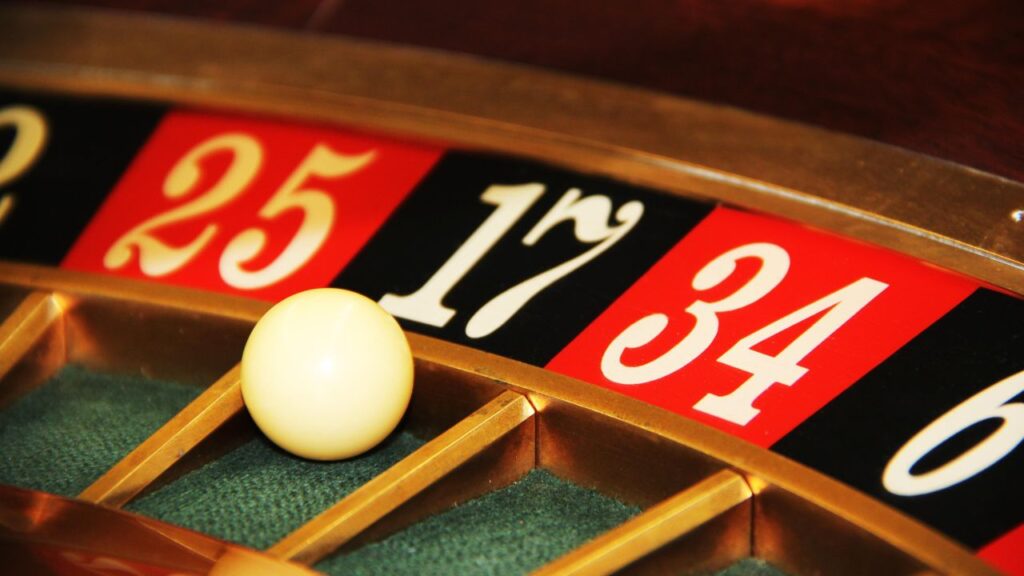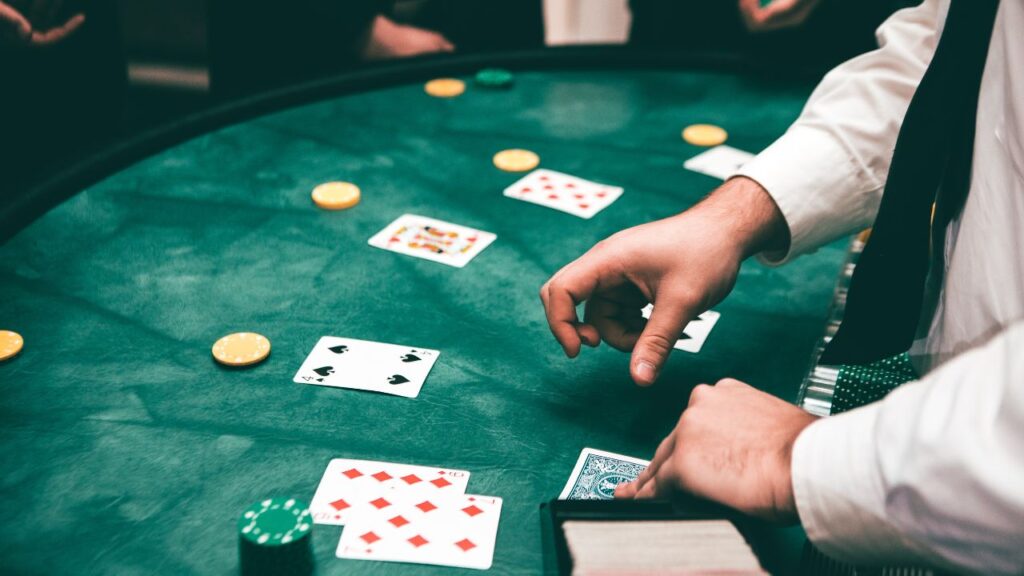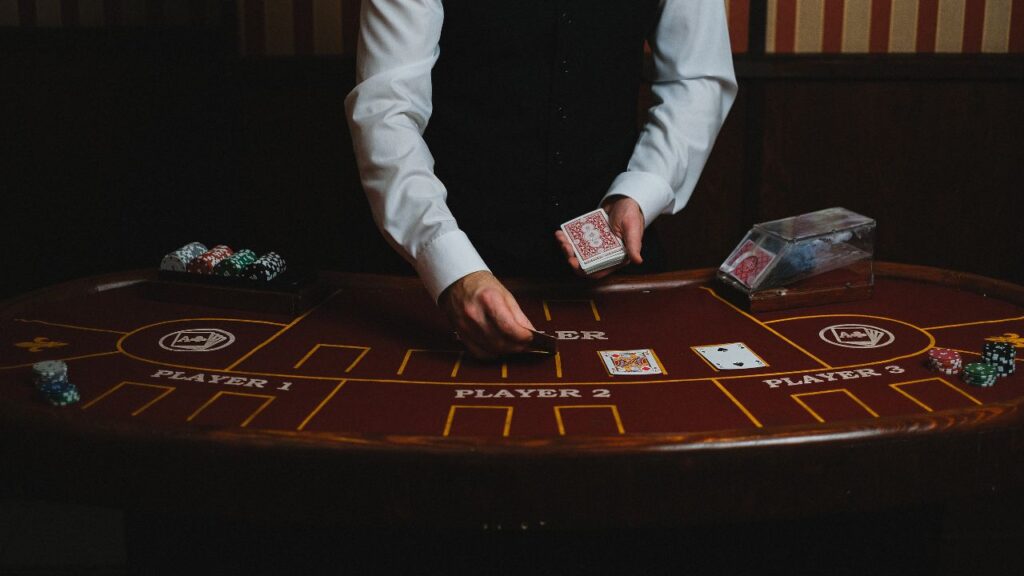From the glitzy allure of Las Vegas to the high-stakes drama of Monte Carlo, casinos have long served as captivating backdrops in the world of cinema. Whether it’s the clink of chips, the spin of the roulette wheel, or the intense focus at the poker table, casino scenes are often among the most memorable in movies. Join us as we explore some of the best casino scenes ever captured on film, showcasing moments of triumph, despair, and everything in between.
The Glamour of Casino Royale
The iconic James Bond film, Casino Royale, not only rebooted the franchise with Daniel Craig’s debut but also left an indelible mark on the portrayal of casino culture in cinema. The film’s central setting, a high-stakes poker game at the luxurious Casino Royale in Montenegro, showcases the opulence and tension that can only be found at the nexus of wealth, risk, and deception. Through its meticulous attention to detail, the film captures the essence of casino glamour, from the clink of chips to the swish of cocktail dresses.
The poker game itself is a masterclass in suspense and strategy, reflecting the high-stakes world of professional gambling. The filmmakers went to great lengths to ensure realism, consulting with professional poker players to script a believable and gripping tournament. This dedication to authenticity brings the audience into the heart of the action, making them feel every bluff and call. The scene’s intensity is heightened by the personal stakes for Bond, who is not just playing for money but to prevent a terrorist financier from winning the pot. This melding of personal vendettas with professional gameplay encapsulates the dual nature of casino culture: one part glitz and glamour, another part perilous battleground.
Beyond the poker table, Casino Royale explores the allure of casino life, with its luxury and danger coexisting in close quarters. The film’s depiction of Casino Royale is sumptuous, filled with the bright lights and the seductive ambiance that have become synonymous with the world’s most prestigious gambling venues. Yet, beneath the surface, there’s a tension that can’t be ignored, a reminder of the high stakes beyond the baize. Through its nuanced portrayal of casino culture, Casino Royale invites viewers to experience the thrill of the gamble, the elegance of the setting, and the intensity of competition, making it a standout in the genre of casino films.
- The intricate poker game that serves as the film’s climax.
- James Bond’s entrance into the Casino Royale, setting the stage for the drama to unfold.
- The tense confrontation between Bond and Le Chiffre across the poker table.
- The glamorous setting of the Casino Royale, showcasing the luxury of high-stakes gambling venues.
- The strategic nuances of poker depicted in the film, highlighting the skill and deception involved.
Behind the Scenes: Crafting the Casino Experience in Casino Royale

Delving deeper into the making of Casino Royale, it’s fascinating to uncover how the filmmakers recreated the authentic casino experience. From the design of the Casino Royale set to the selection of poker chips and cards, every detail was meticulously chosen to reflect the high standards of luxury and realism demanded by the story. The filmmakers’ commitment to authenticity extended to the cast’s preparation as well; actors participated in extensive poker training to ensure their performances at the table were convincing. This behind-the-scenes effort paid off, delivering a casino scene that is not only visually stunning but also rich in detail and atmosphere.
The impact of Casino Royale on the portrayal of casinos in film cannot be overstated. It set a new benchmark for how the tension, glamour, and psychology of casino gambling could be depicted on screen. For audiences and filmmakers alike, the film remains a masterclass in how to blend narrative depth with the allure of the casino world, making it a timeless reference point for the genre.
The Magic of Casino Scenes in Cinema
The allure of the casino has been a compelling motif in movies for decades, offering a glimpse into a world of glamour, risk, and sometimes, the darker sides of human nature. One of the most iconic aspects of these scenes is their ability to capture the tension and excitement inherent to gambling, making audiences feel as if they’re sitting at the table, holding their breath in anticipation. Films that dive into this setting often explore themes of luck, destiny, and the often-blurry line between winning and losing, both at the tables and in life.
Perhaps no scene is more emblematic of the casino’s cinematic charm than the high-stakes poker game in Casino Royale. Here, the tension is palpable, as James Bond faces off against his adversaries in a game that’s as much about psychological warfare as it is about the cards in play. Similarly, Ocean’s Eleven showcases the casino as a backdrop to an elaborate heist, blending the thrill of gambling with the excitement of a meticulously planned crime. These scenes are not just memorable for their storytelling but for how they encapsulate the allure and danger of the casino world.
Moreover, films like The Hangover remind us that casino scenes can also serve as the perfect setting for comedy and absurdity, showcasing the unpredictability and chaos that can ensue in such a charged atmosphere. Whether it’s the dramatic tension of a high-stakes bet or the comedic potential of a night gone wrong, casino scenes remain a uniquely fascinating aspect of cinema.
Iconic Casino Scenes in Film History
| Movie Title | Scene Description | Year |
|---|---|---|
| Casino Royale | High-stakes poker game | 2006 |
| Ocean’s Eleven | Casino heist sequence | 2001 |
| The Hangover | Blackjack scene | 2009 |
| Rain Man | Blackjack card counting | 1988 |
| Molly’s Game | Underground poker games | 2017 |
Ocean’s Eleven: The Heist
The 2001 remake of Ocean’s Eleven directed by Steven Soderbergh, stands out not just as a pivotal heist movie but also for its iconic casino scenes that have left an indelible mark on Hollywood’s portrayal of Las Vegas. The film’s plot revolves around Danny Ocean (George Clooney) and his ten accomplices as they plan to rob three Las Vegas casinos simultaneously. The casinos, owned by the antagonist Terry Benedict (Andy Garcia), are the Bellagio, the Mirage, and the MGM Grand. These settings provide not only a glamorous backdrop but also a high-stakes atmosphere that keeps viewers on the edge of their seats.
The heist itself is a masterpiece of planning, deception, and execution. The elaborate schemes employed to infiltrate the vault of the Bellagio casino are both ingenious and bold. From the recruitment of a diverse team of specialists to the intricate use of technology and disguise, every element is meticulously crafted. The tension peaks as the team faces unexpected challenges, including a rival thief and the FBI, adding layers of complexity to their operation. The film superbly captures the essence of Las Vegas’s glitzy and perilous casino life, making it a benchmark for heist movies that followed.
Moreover, the camaraderie among the crew members, combined with their distinct personalities and skills, adds a human element to the story. This aspect humanizes the heist, making the audience root for their success despite the moral ambiguities of their mission. The climax, featuring the successful heist and its aftermath, is both satisfying and clever, providing a twist that few see coming. Ocean’s Eleven not only delivers an unforgettable casino heist but also redefines the genre for modern audiences.
- Introduction of the team and the plan
- Reconnaissance and preparation in the Las Vegas casinos
- The night of the heist: Infiltrating the Bellagio
- The vault: Overcoming high-tech security
- The escape and the twist ending
The Intensity of Rounders

The movie Rounders, starring Matt Damon and Edward Norton, is a cult classic among poker enthusiasts and cinephiles alike. It dives deep into the underground world of high-stakes poker, capturing the essence of the game’s psychological warfare. One scene, in particular, stands out for its sheer intensity and has been etched in the memories of its audience. This scene is not just a game of poker; it’s a carefully choreographed dance of wits, bluffs, and raw human emotion.
The tension in the room is palpable as the protagonist, Mike McDermott, faces off against his arch-nemesis, Teddy KGB, in a climactic battle that is about much more than just the cards on the table. The meticulous attention to detail, from the flick of the cards to the subtle tells of the players, brings this scene to life in a way that few other movies have managed. The stakes are incredibly high, and the outcome is uncertain until the very last moment, making it a heart-pounding watch from start to finish.
What sets this scene apart is not just the technical accuracy with which the game of poker is portrayed, but also the psychological depth that it delves into. It’s a masterclass in tension-building, with each moment stretching the suspense to its breaking point. The viewer is left on the edge of their seat, fully invested in the fate of the characters. The brilliance of this scene lies in its ability to transcend the game itself, turning a hand of poker into a compelling narrative of risk, sacrifice, and redemption.
| Element | Description | Impact |
|---|---|---|
| Character Development | Deep dive into the psyche of the protagonist and antagonist. | Enhances the emotional stakes. |
| Attention to Detail | Accurate portrayal of poker strategies and behaviors. | Increases realism and immersion. |
| Tension Building | Gradual increase in stakes and suspense. | Keeps viewers engaged and on edge. |
| Psychological Depth | Exploration of characters’ motivations and fears. | Adds layers to the narrative. |
| Cinematography | Use of close-ups and pacing to enhance tension. | Strengthens the scene’s impact. |
Maverick’s Poker Face
The film Maverick, directed by Richard Donner and starring Mel Gibson, Jodie Foster, and James Garner, is an unforgettable classic that brings the thrills and spills of poker to the big screen. One of the most memorable moments in this film is undoubtedly the high-stakes poker game, which showcases not just the game’s inherent tension but also the remarkable poker face of Bret Maverick, played by Gibson. The scene is a masterclass in suspense and strategy, as Maverick’s calm and enigmatic demeanor keeps both his opponents and the audience guessing.
The poker game, set aboard a luxurious riverboat, is filled with a colorful cast of characters, each bringing their own style and bluff to the table. However, it’s Maverick’s ability to remain cool under pressure that truly stands out. His poker face is a blend of subtle smiles and unreadable expressions, making it impossible for others to gauge his hand. This scene is not just about the cards being played, but also the psychological battle between the players. It’s a vivid reminder of why poker is often seen as much a game of skill as it is of luck.
Moreover, the cinematography and direction during this sequence are nothing short of brilliant, capturing the essence of poker’s allure. The tension is palpable, with each player’s move adding to the mounting suspense, culminating in a climactic showdown that leaves viewers on the edge of their seats. This scene is a testament to the film’s ability to encapsulate the spirit of poker, making it a standout moment in movie history.
Decoding Maverick’s Strategy
- The significance of non-verbal cues in poker.
- How Maverick uses opponents’ perceptions against them.
- The role of psychology in successful bluffing.
- Comparing Maverick’s tactics to real-world poker strategies.
- The impact of a well-timed bluff in high-stakes games.
The Sting’s Classic Con

The Sting, a masterpiece of cinematic art, has left an indelible mark on the genre of con movies with one of the most brilliantly executed poker games in film history. Set in the 1930s, this film not only captivates with its sharp wit but also with its intricate plot twists. At the heart of this movie is a high-stakes poker game that is as much about the play of cards as it is about the play of human emotions and deception. The scene is a masterclass in tension, with each character’s move more calculated than the last.
Robert Redford and Paul Newman deliver iconic performances, embodying their characters with a charisma that is both enthralling and authentic. The poker game itself is a battleground where the slightest misstep can mean ruin, yet it’s carried out with such finesse that one can’t help but admire the craft behind the con. The meticulous planning and execution of the scam, set against the backdrop of Scott Joplin’s ragtime music, elevate the entire sequence to a level of cinematic excellence that few films achieve.
The Sting’s poker game is not just a scene; it’s a pivotal moment where the underdogs outwit the seemingly invincible, symbolizing hope and the triumph of ingenuity over brute force. It’s a testament to the art of the con, where the real game is played not on the table, but in the minds of the players.
Key Elements of The Sting’s Poker Scene
| Element | Description | Impact |
|---|---|---|
| Setting | 1930s high-stakes poker game | Creates a nostalgic and tense atmosphere |
| Characters | Con artists vs. Mobster | Heightens the stakes and emotional investment |
| Music | Scott Joplin’s ragtime | Enhances the period feel and adds levity |
| Tension | High stakes and risk of exposure | Keeps viewers on the edge of their seats |
| Outcome | Triumph of the underdogs | Delivers a satisfying resolution and message |
In conclusion, The Sting’s classic con scene stands as a testament to the film’s enduring legacy in the pantheon of great cinema. Its clever narrative, compelling characters, and the high-stakes tension of the con continue to captivate audiences, making it a timeless piece that resonates with the allure of the perfect scam. As such, it remains a quintessential portrayal of wit and cunning that is both inspiring and entertaining.



